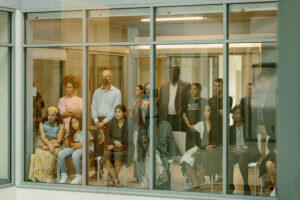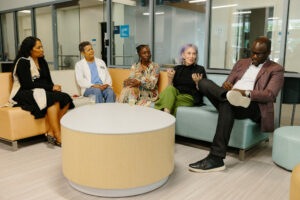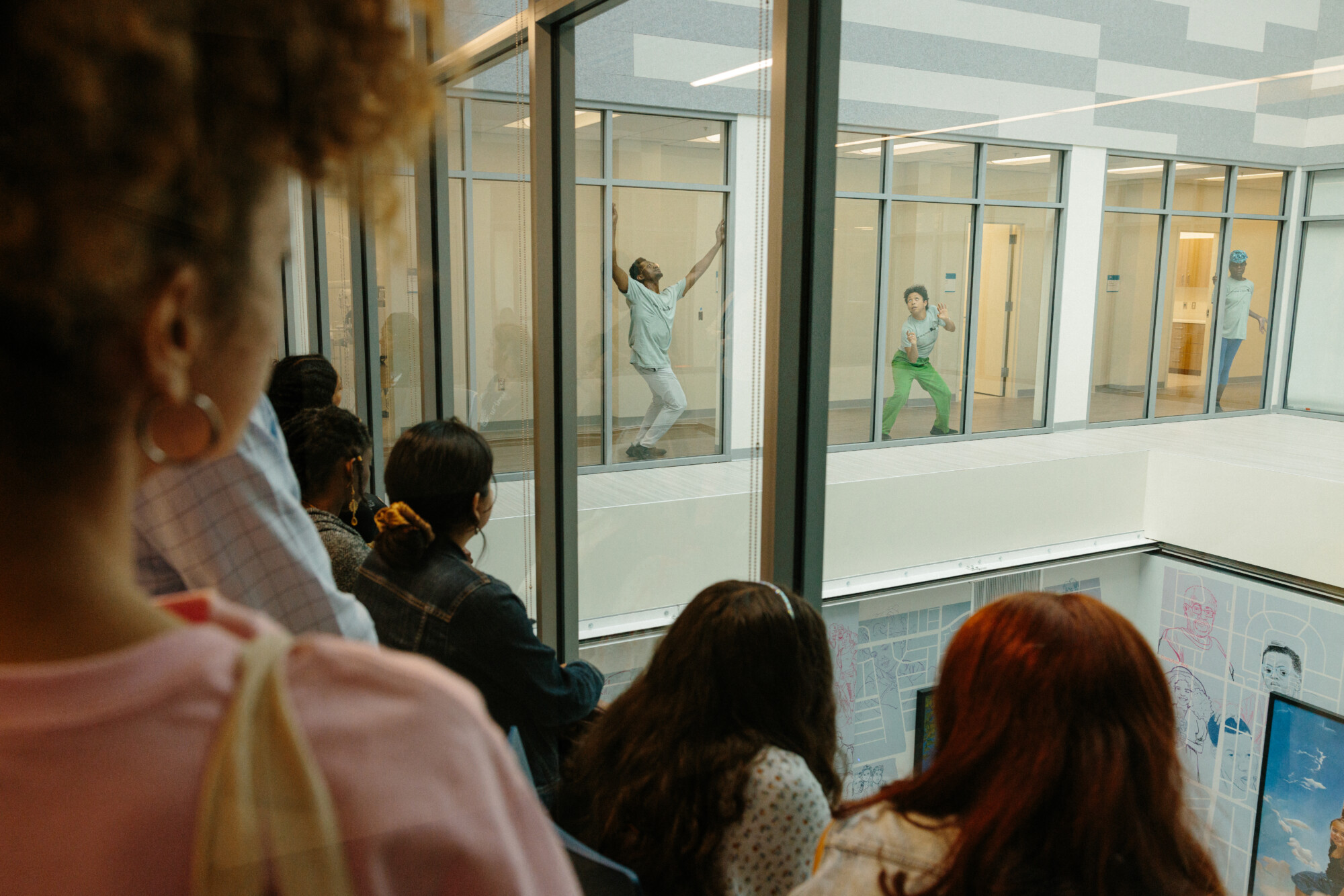By Dr. Kerry English Creative Fellow Chyenne Roan-Santini
I can remember the feeling of safety and familiarity that came over me when I read the description of Heidi Duckler’s Time for a Slow Dance. When I saw the words “mental health panel” in the program, I felt that this event spoke to me. I’ve had the privilege of attending several Heidi Duckler Dance performances. Each one holds a new level of mystery and wonder, like dancers utilizing nature as their stage in Ebb and Flow, scaling the walls of old churches in The Body of the People, or even shifting the simplicity of the Bendix building by transforming the workspace into a party for Truth or Consequences.
However, this event spoke to me in a new way. Time for a Slow Dance felt sacred because it took place during Mental Health Awareness Month and because it was held at the new Jacqueline Avant Children and Family Center in Watts-Willowbrook. The center opened in remembrance of the late philanthropist Jacqueline Avant to provide mental health services to children and teens, including those in foster care like I once was.
There was an energy in the center that reassured me it was built to make a difference. There were a few workers from the mental health facility who attended the show. They seemed genuinely enthusiastic about not only the performance, but also about providing their insight to the panel and working to create change.

Roan-Santini and other audience members watch as dancers perform in “Time for a Slow Dance.”
There is a particular room in the center of the space that I was instantly drawn to. It is open and airy, designed in a way that lets in sunlight, with gorgeous works of art depicting children on each wall. I thought about all of the children who would be served in this very space, and then images of my mother as a child came into my mind.. If this space was around when she was a teen in the early stages of her mental illness, I would feel that she was in safe and loving hands here. I would want her to sit in this very room where the sun shines.
At the start of the performance, a vocalist and saxophonist accompanied youth performers from the nonprofit A Place Called Home, along with dancers from HDD – including Raymond Ejiofor, my mentor as part of the Dr. Kerry English Creative Fellowship . The performers took us on a journey starting with the outdoor portion in the bustling hospital area, where bystanders stopped and looked on in amazement. There was a contrast between the ambulances wailing and the performers building off of one another to tell a story of wellness and our connection to nature. I felt a sense of chaos knowing that I was witnessing art in the midst of life and death. In a way, I found acceptance and normalcy in that.
The audience was then led to the second floor, in a room with windows that gave us a view of an office space directly across from us. The room we were in reminded me of a skybox at a stadium. We all huddled in this small glass building, as musicians surrounded us outside of the glass. Normally I am claustrophobic in these situations, but fascination overshadowed my discomfort. The dancers appeared from behind office blinds in the three window panels, as they experimented with shapes, height, and sound. In true Heidi Duckler fashion, the performance was so extraordinary that I almost forgot that I was still in a medical facility.
Following the dance portion of the program, there was a panel on mental health led by Alex Martin Johnson, the vice president of Bryson Gillette. I was eager to be a part of the conversation, as it hit so close to home. My mom was battling her mental illness in a jail cell at the same time that we were having this discussion on mental health. There were excellent panelists including Heidi Duckler, who spoke on the importance of continuing Jacqueline Avant’s legacy and how sacred of a space we stood in.

Speakers on the panel at “Time for a Slow Dance” discussed the importance of advocating for mental health in our community.
There were also individuals on the panel with experience working in the mental health field, and one person in particular stood out to me instantly: Lanéay London, a program manager at the urban LA chapter of the National Alliance on Mental Illness. Lanéay captured my attention with her presence; her energy even seemed to make the lights go off in the room behind where all of the panelists were sitting (all of us were stunned, and I’m pretty sure we all let out a scream). Lanéay wasn’t surprised though. The lights went off as she was speaking on her healing work. “Oh now the universe is just showing off,” she joked.
Lanéay spoke on intimate details of reaching a breaking point with her own mental health, and how she was then led to begin her healing journey. Hearing a Black woman speak about coping with her mental health reminded me of my mother, another Black woman, one who is buried in layers and layers of pain, unresolved traumas, and untreated mental illness. Lanéay also mentioned that at NAMI, there are support groups and classes for families and loved ones of those with mental illnesses, a resource I had been searching for. I was so greatly inspired that I found her after the panel. I shared with her details about my mother’s mental illness and she instantly embraced me. She gave me more information on NAMI and we exchanged contacts. At that moment I knew that I was meant to be at that event, and I felt one step closer to contributing to a world where we no longer overlook people like my mom.


